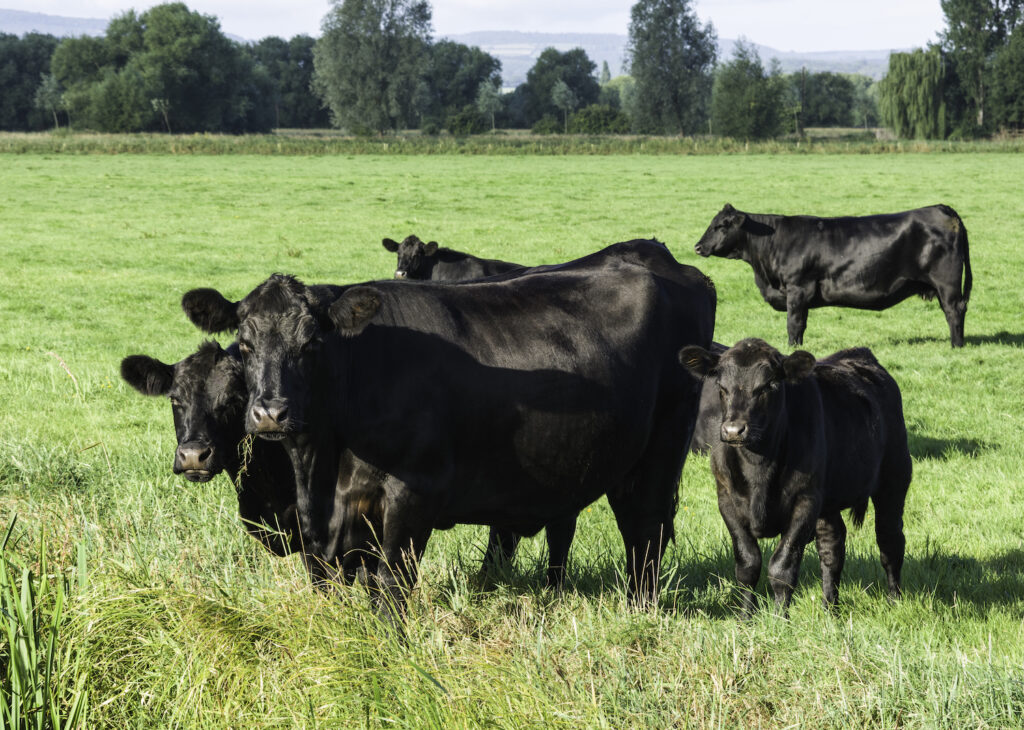Cull cow market offers opportunity to tighten calving intervals
13th June 2022
With cull cow prices reaching a record high this year, there is an opportunity to replace unproductive cows with improved genetics and focus on tightening calving intervals, improving overall herd performance.

Robert Gilchrist, CEO of the Aberdeen-Angus Cattle Society, suggests that with the cull cow market paying a premium, it’s pertinent to evaluate your herd as a whole and take a considered approach to bringing in replacements and building a more productive, younger herd.
Fertility is known to be the key profit driver for a suckler herd, so placing an emphasis on maternal traits should be a priority.
“The UK suckler herd currently has an average calving interval of 445 days. However, the ambition should be to have suckler cows that calve unassisted every 365 days, with easy fleshing characteristics,” explains Mr Gilchrist.
“Aberdeen-Angus as a breed is well renowned for its maternal traits, but I would still encourage farmers to utilise the data that is available to them. Using Estimated Breeding Values (EBVs) will help farmers to push their herd forwards by selecting replacements that will enable them to hit these targets.
“Selecting replacement heifers with the right traits in the first instance will help farmers build a herd on solid foundations. Heifers from cows conceived in the first or second cycle are more likely to have better fertility for example.
“There are EBVs for calving ease (direct and daughters) and gestation length, along with birth weight which are important areas to focus on when building a profitable suckler herd. For example, calving ease daughters is a trait you can use to identify how easily a sire’s daughters will calve at two years old; an industry target not always achieved,” he adds.
“Overall, easy calving cows are better able to recover, and get back in calf again, tightening the calving interval.
“Empty days cost you money, that’s why it’s so important to get the calving interval down to the target 365. For every difficult calving, you’re likely to lose at least one cycle (21 days) which can cost you as a minimum £21 in keep. But you should also factor in the 21 days lost calf production and the knock-on effect for the next breeding season. At an average DLWG of 1.2kg per day you could have a 25kg lighter calf in 12 months’ time, losing around £60/head in calf value,” he adds.
“Protracted calving periods and calving difficulties are also more expensive in losses, labour and vet costs.”
Alongside genetics, there are also a number of management techniques that farmers can consider to tighten the calving pattern.
“Ensure you’re feeding the highest quality grass and driving a rising plane of nutrition into bulling. This will ensure the cow is at prime body condition for when they go back to the bull. Good quality spring grass is more than adequate to achieve the desired body condition for an easy fleshing animal which again you can select for,” explains Mr Gilchrist.
“Now is not the time to reduce the herd, but instead think about the role genetics play in building a beef herd fit for the future, so you know you can hit performance targets and produce beef the consumer wants. Ultimately, you can’t outperform genetics, decisions you make now will affect your herd for years to come as they get passed to future generations,” Mr Gilchrist concludes.
